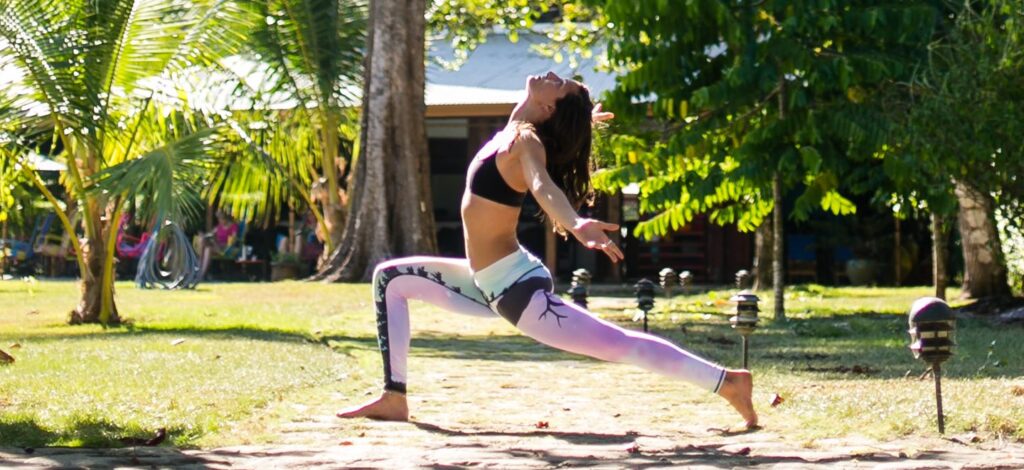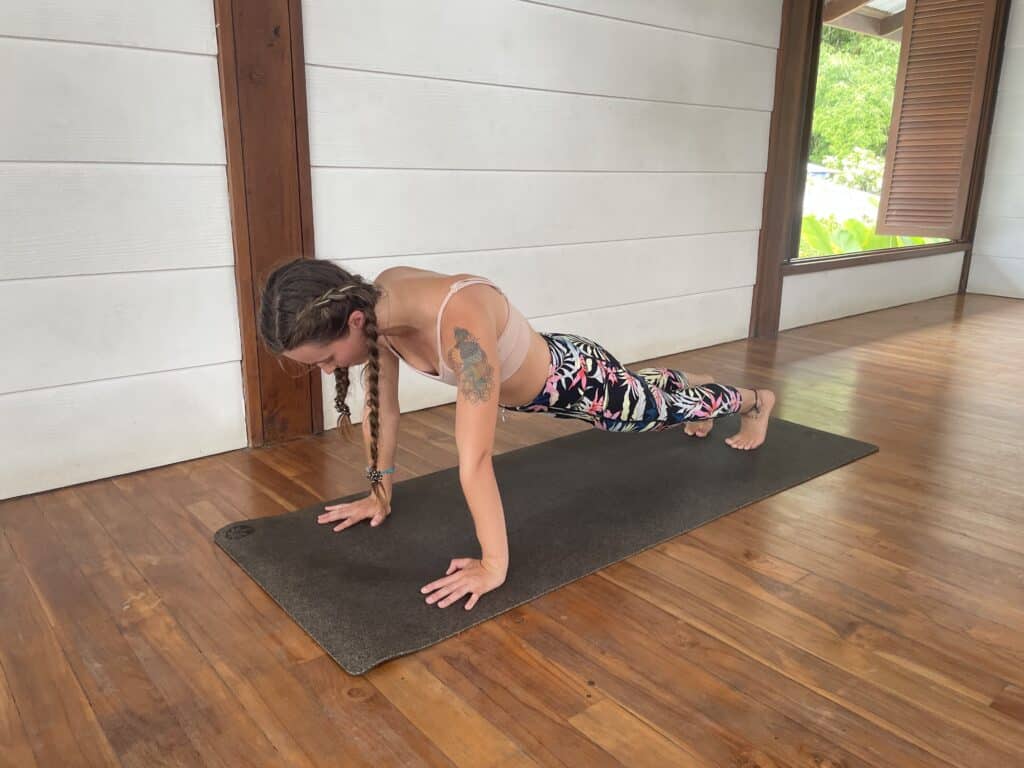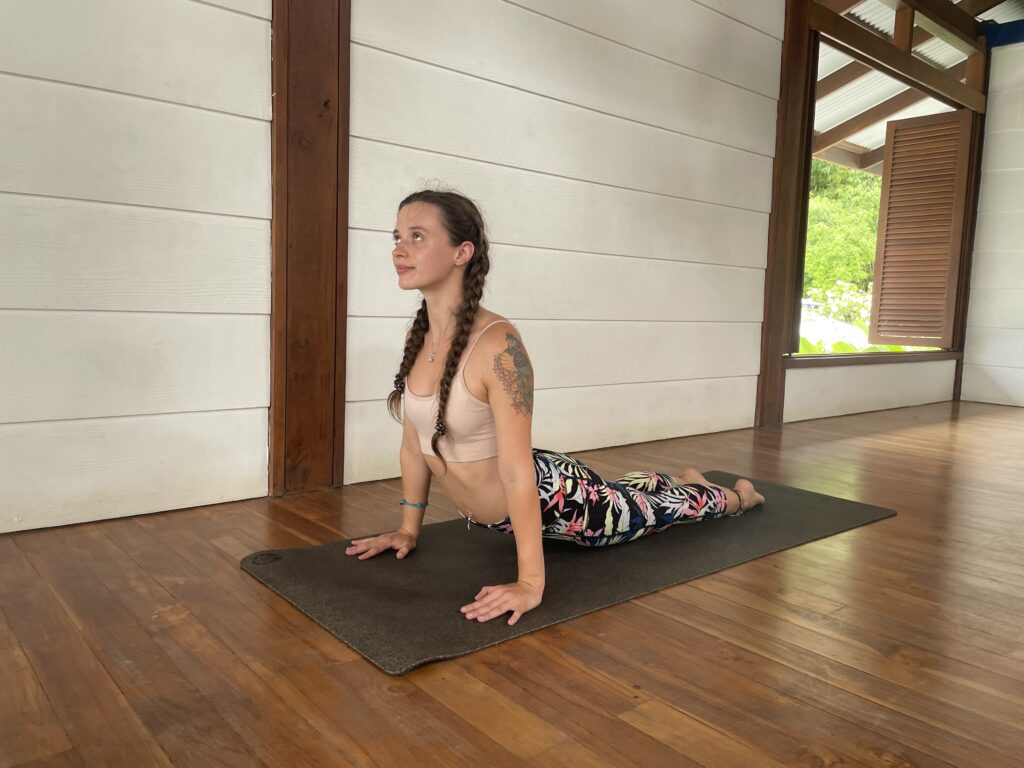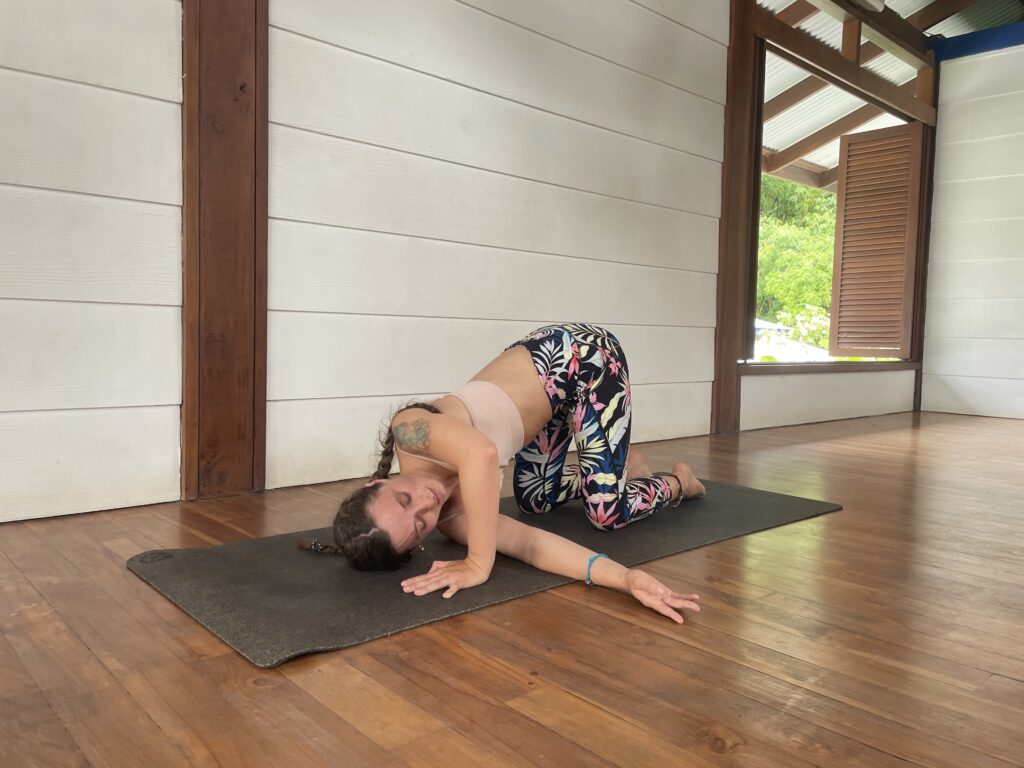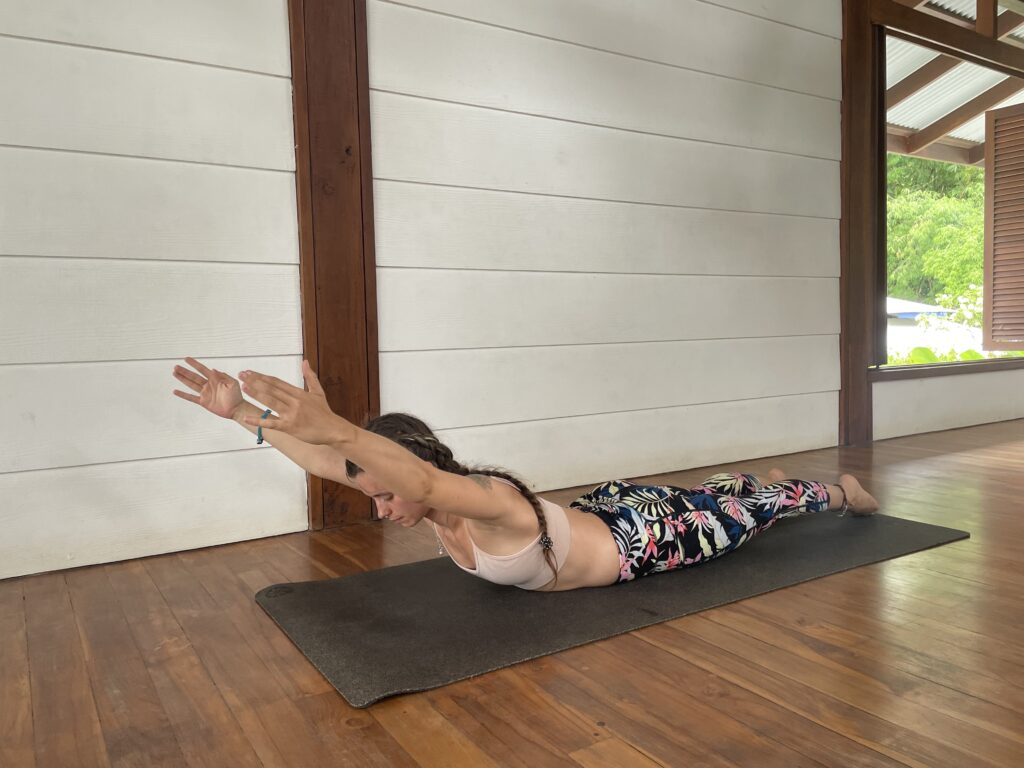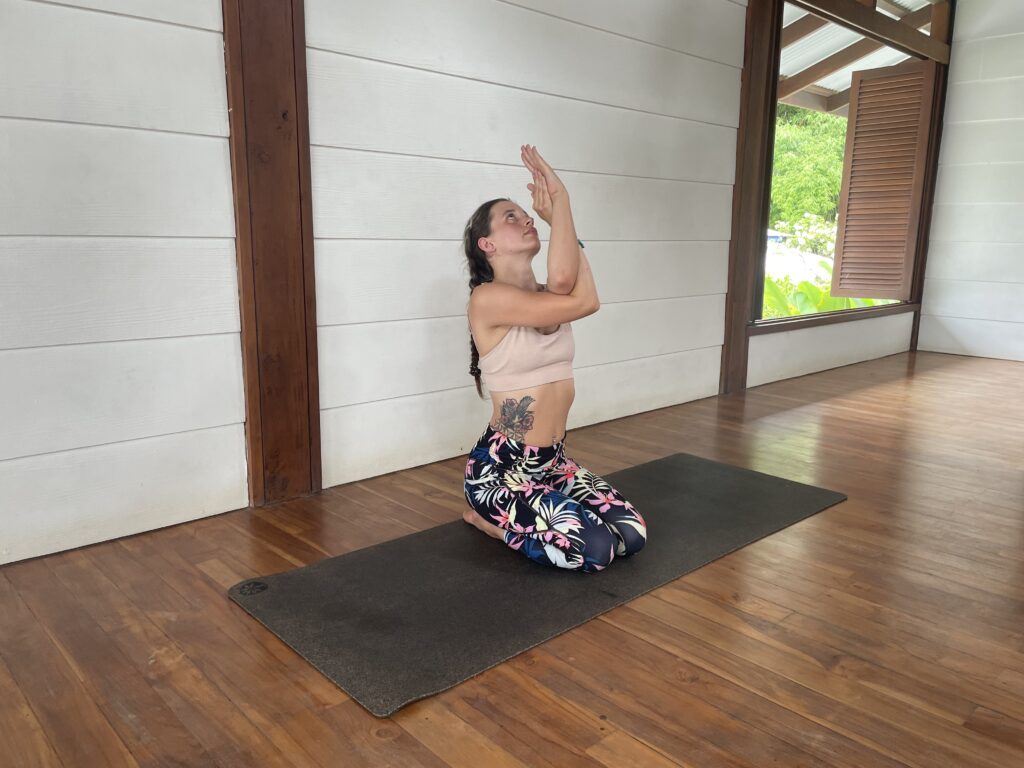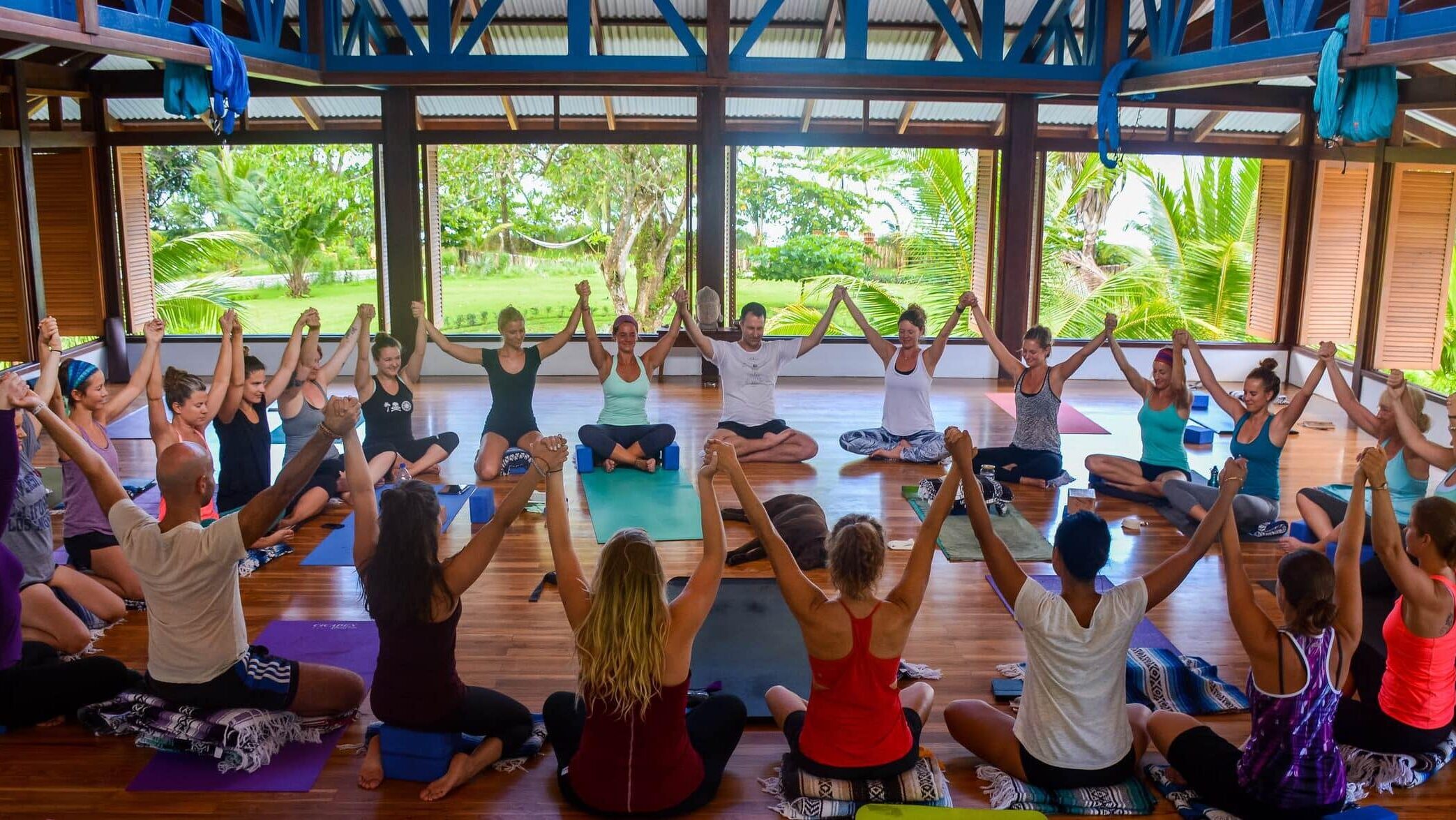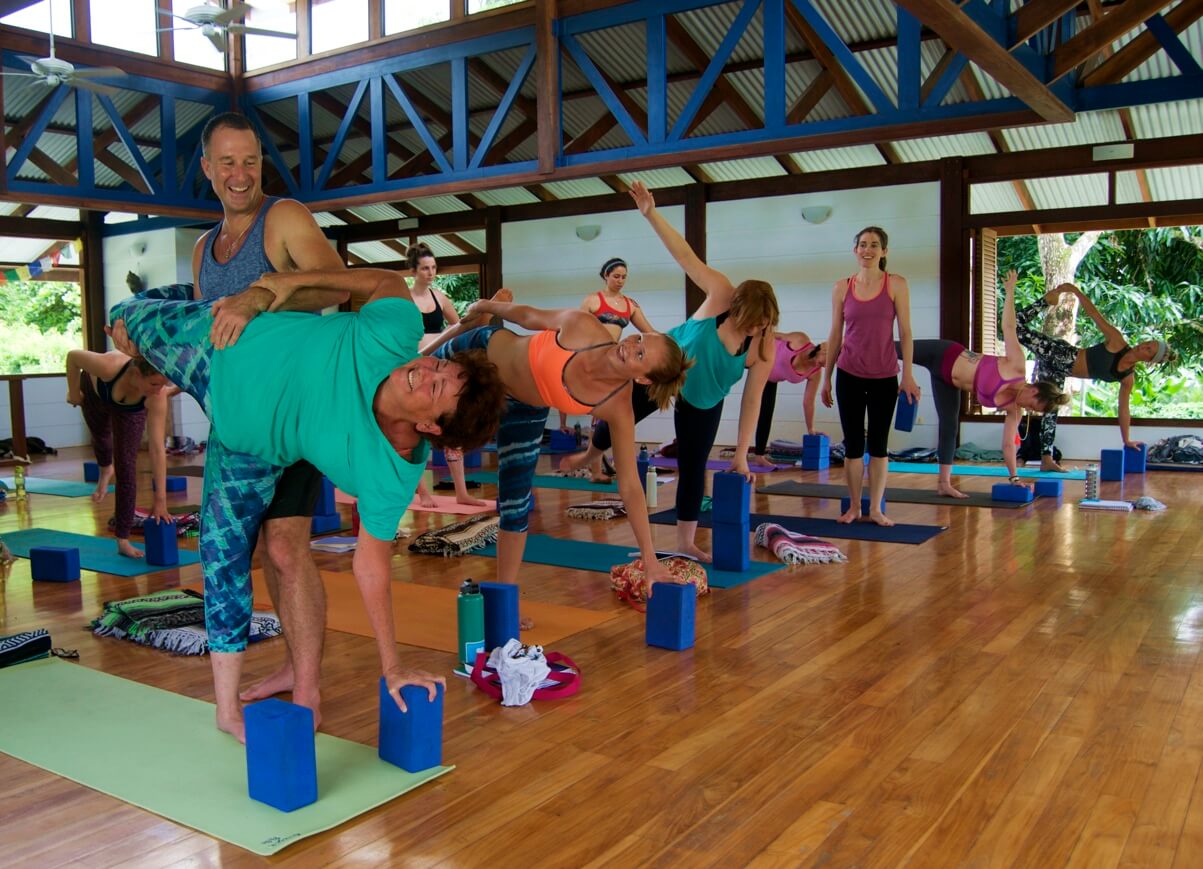Being in pain is not a great feeling. It can affect everyday and actions, daily living and even impair your mental health. And with so much going on in today’s society, the last thing you need is to feel discomfort in your body. Pain can arise in many areas of the body; from the hips, knees, and even the jaw. But in this article, we are going to focus on shoulder pain, what causes it and the best yoga poses you can practice to eliminate shoulder pain from your life.
As the most flexible joint in the body, the shoulder is made up of four muscles and their tendons which we refer to as the rotator cuff. This gives the shoulder its range of motion. Without the strength of our shoulders, we would not be able to do things like hold groceries, raise our arms or even have the ability to do the most basic yoga postures like downward-facing dog! Our shoulders are important, so it would be nice if we can have them functioning optimally and pain-free.
Although this article will focus on how to relieve shoulder pain with yoga, there are also many other ways you can be pain-free throughout your entire body! We all deserve to live a pain-free life. And guess what, we can help you!
If you are experiencing any kind of pain, consider taking Yogi Aaron’s Pain-Free Series where he will help you begin your journey towards your pain-free life. All you need is five minutes per lesson, and it’s also FREE! Using a revolutionary approach to yoga, Yogi Aaron created Applied Yoga Anatomy + Muscle Activation ™ to help people feel better in their bodies. With these seven short, simple, and effective practices, you will be pain-free in no time! So take the first step towards the rest of your life and start this series today!
Why are shoulders important?
We all know that shoulders are important… But let’s go deep into the shoulders and examine their role in the body’s overall structure. As a complicated and incredible piece of machinery, the shoulders are essential in keeping the whole body functioning. If the shoulders aren’t working, then other parts of the body will soon follow and start to decline as well.
The shoulders and spine (specifically the upper spine) work synergistically. This means that they work together to achieve a common goal. In this case, it’s to keep the body functioning. If the spine is weak, then the shoulders will be vulnerable and vice versa. Much like the hip extensors and flexors are integral to lower back health, the shoulder muscles are essential to the neck’s stability. In your yoga practice, it is vital that you work to strengthen these muscles instead of causing them more excessive stress.
As one of the largest and most complex joints in the body, the shoulders are formed where the humerus fits into the scapula. Picture here a ball and socket. This formation allows you to lift your arm up, behind, forward and backward – all key movements that we use in our everyday lives.
What causes shoulder pain?
If you are experiencing pain lifting your arm, twisting your body or even tilting your neck forwards and backwards you are most likely experiencing some kind of shoulder pain in the form of tightness. Shoulder pain is often caused by swelling, damage, or changes in the bone around the rotator cuff which can result in discomfort and/or pain.
Tightness is a protective mechanism. Much like how your body tenses up when walking on ice, your body tightens to protect yourself from instability. We need to think about what muscles aren’t working to move you into a position that your body feels like it needs to keep you out of that position for.
There are several possible causes of shoulder pain that can result in discomfort in the shoulder. Here are some of the most common reasons why you may be experiencing shoulder issues:
- Inflammation: As a natural reaction to an infection or injury, inflammation is when your shoulder becomes hot, red and swollen. This can also be very painful
- Damage to tendons: When there is damage to the muscles and tendons around the shoulder, pain can also occur
- Damage to bones: Often caused by arthritis, damage to the bones and cartilage around the shoulder are also common causes of shoulder pain
- Tension: Often connected to the way you are standing or sitting, tension in the muscles between the neck and shoulder can cause significant discomfort
As well, because of how the body works as a whole, it is also possible that your shoulder pain is being caused by another part of the body. For example, if your pelvis is out of alignment this can also result in shoulder pain.
How can gravity cause pain?
One of the biggest problems that we see in yoga, or in any kind of sport-related activity, is gravity. In yoga, gravity is often used as a way to go “deeper” into a posture (remembering here that deeper is not always better). But gravity can be as much of a friend as it is a foe – it all depends on how we use it. For example, in postures like bridge, wheel, dancer and superman pose, gravity is being used as a tool to build strength. In general, poses that use movement to go against gravity will be safer and strengthening.
However, we can also use gravity to go deeper into postures like child’s pose, pyramid pose, and supine twists. But as we said earlier, “deeper” is not always better. Gravity can sometimes pose a risk because when muscles are pushed beyond their end range of motion, the neuromuscular connection is disrupted. This means that we are disrupting the connection between the brain and the muscles.
When an interruption like this occurs, muscles lose their ability to contract and contract on demand. When we stretch for extended periods of time the neuromuscular response becomes inhibited. This can result in the muscles shutting down. They will lose their ability to contract and contract on demand and ultimately the stress process begins.
All of this is just a long-winded way of explaining why stretching, and using gravity for assistance, are actually harming our bodies and causing further stress.
Is yoga good for shoulder pain?
We all know that practicing yoga can be a great way to relieve issues like neck pain and back pain, so the same can go for relieving shoulder pain as well! When you are in pain, the last thing you want to do is stress out the area that is bothering you. That is why it’s important to practice the right kind of yoga to help relax the muscles in your shoulders as opposed to stressing them out even more.
As we know, yoga can reduce stress and other issues like depression and anxiety. And when we are suffering from all of these issues our bodies can be tense and therefore result in pain. This is why it is important to practice yoga – so that we can reduce the amount of pain we have in our bodies.
Yoga can also help us build strength in our shoulders. And having a strong body will decrease the likelihood of us experiencing pain. There are many ways that yoga can help you stay strong forever, so think about incorporating it into your daily routine. Overall, yoga is great for shoulder pain because it can strengthen the muscles around the shoulder and help the body relax.
How can spinal molding reduce shoulder pain?
To improve posture and eliminate neck and back pain, spinal molding can be used as a tool to restore a spine to its proper curvature. This can also be one of the fastest (and easiest) ways to reduce shoulder pain. We often hear people complaining about chronic neck and back pain and resorting to medication to cope with this pain. But let’s look at how this easy technique can actually reduce, and even eliminate your pain without a trip to the drug store.
According to some international health organizations, lower back pain is considered one of the top disabilities. Some health care professionals have even described back pain as a “global pain epidemic”.
Although we can trace a lot of our neck and back pain to our modern lifestyle habits, it might still be hard to fix. For example, we all know that sitting at a desk all day may not be the best for our health. But if this is our job and there is no way around this it might be hard to fix. If we don’t catch this poor posture soon and start combating this we will end up with the loss of normal spinal curvature. But don’t worry! Spinal molding can help!
As a necessary tool for posture correction and curve rehabilitation, spinal molding and spinal blocks can be key tools in fixing chronic back and neck pain. Functional blocks are great tools to help restore natural spinal curvature and can be very accessible. Take a look at some of these blocks for the neck and these blocks for the lower back.
These simple pieces of foam padding may look like nothing, but rest assured they can make a big difference. Working to gradually “re-mold” or “remodel” the spine, these blocks provide a fulcrum-like support system you can use to restore your spine to its proper curvature.
The best yoga poses for shoulder pain
Yoga can be incredibly therapeutic when it comes to relieving shoulder pain. There are many yoga poses you can practice relieving shoulder pain but here are a few beginner postures to help you relieve shoulder pain fast.
1. High Plank Pose (Phalakasana)
This is a great posture to get into the transverse abdominal muscles and release some of the tension that you may be holding in the shoulders. The plank pose is also an incredible beginner posture that can strengthen the shoulders as well as the whole body.
- Begin in an all-fours position, hands should be slightly wider than your shoulders and directly beneath them
- Elongate your legs behind you, hip-width apart or slightly wider
- Press your hands into the ground and engage your glutes and core (you should be in the top of a push-up position)
- Continue to engage your core and hold for as long as feels necessary (three to five breaths)
2. Upward Facing Dog (Urdhva Mukha Shvanasana)
As a posture that involves stabilizing the muscles of the shoulder and upper back, an upward-facing dog (or up dog) is a great way to help build strength in the shoulders.
- Start by lying belly down on your mat
- Hands should be in line with your chest, palms facing the ground and fingers pointing forwards
- Press the tops of your feet into the mat and straighten your arms so that your thighs lift off the floor
- Focus your gaze forward and pull your shoulder blades back
- Hold this posture for three to five breaths
3. Thread the Needle (Urdhva Mukha Pasasana)
This posture allows you to get the full range of motion from your shoulder. Therefore, it is a great posture to use in your practice to help strengthen the muscles of the shoulder.
- Begin in a tabletop position (all-fours). Wrists should be stacked underneath your shoulders and knees directly under the hips
- On an inhale, lift your right arm up and thread it underneath the left arm
- Lower your right cheek to the mat (you can use a blanket here to rest your cheek on for comfort)
- Hold this posture for three to five breaths and then return to a tabletop position
4. Locust Pose Variation (Salabhasana)
Locust pose and locust variations are great postures to include in your yoga practice to maintain and build strength. This posture not only helps your shoulders but your lower back as well!
- Start this posture by lying on your stomach with your arms down by your sides
- Stretch your legs out behind you and press the tops of your feet into the mat
- Draw your arms forward so that they are in a superman position in front of you
- Engage your legs so that your kneed lift off the floor
- To avoid straining your neck, keep your gaze on the floor and in a neutral position
- Stay in this posture for three to five breaths and repeat as many times as feels necessary
5. Eagle Pose (Garudasana)
Don’t underestimate the power of this amazing posture. Eagle Pose is a great way to help release tension in the shoulders and encourage the body to relax.
- Begin in a standing or seated position
- Reach both arms out in front of you
- Cross your right arm over the left and then reach your left hand back to interlace your fingers
- Bend your arms to a 90-degree angle
- Focus on keeping your shoulders down and away from your ears while raising your elbows up
Nobody wants to be in pain; that is a fact. So if you have been suffering from any sort of shoulder pain, now is the time to take the step toward a pain-free life and change your life today. Rest assured that if you start practicing spinal molding and incorporating these postures into your routine, you will be pain-free in no time!
Tags: yoga for pain, Yoga Pose, yoga practice
Book/Inquire Now
Got pain? This will help you!
YOU DESERVE TO LIVE PAIN-FREE...
Receive 7 short, simple, and effective practices to alleviate knee, hip, low back, neck, shoulder pain, and more!
All you need is 5 minutes per lesson and it's FREE!
This revolutionary approach to yoga is new, and no one else is teaching this! Since I created Applied Yoga Anatomy + Muscle Activation™ and started teaching it consistently, I've witnessed students heal long-standing injuries, access yoga postures they never thought possible, and tell me over and over again how their body just feels better.
I hope you'll join me on this journey!
~Yogi Aaron
Is Yoga Teacher Training Right For Me?
We Created This FREE 5 Part Series So You Can Get All The Information To Make The Right Choice.
In this series, you will learn:
-
- Am I a candidate for yoga teacher training??
-
- What will I learn in a YTT?
-
- Do I need to have a perfect downward dog to attend YTT?
14-Day 200-Hour Yoga Teacher Training in Costa Rica
If you are looking for a 14-day 200 hour Yoga Teacher Training Costa Rica Immersion, you have landed in the right place. Join the next one!
300-Hour, 28-Day Yoga Teacher Training
Do You Feel Called To Something Greater?
This 300-Hour Yoga Teacher Training immersion training at Blue Osa will immerse you in yoga for one month.
You will have the specific transformational skills and yogic practices you need in order to connect with your higher purpose.
And more! You will be able to offer these transformative skills to others!

